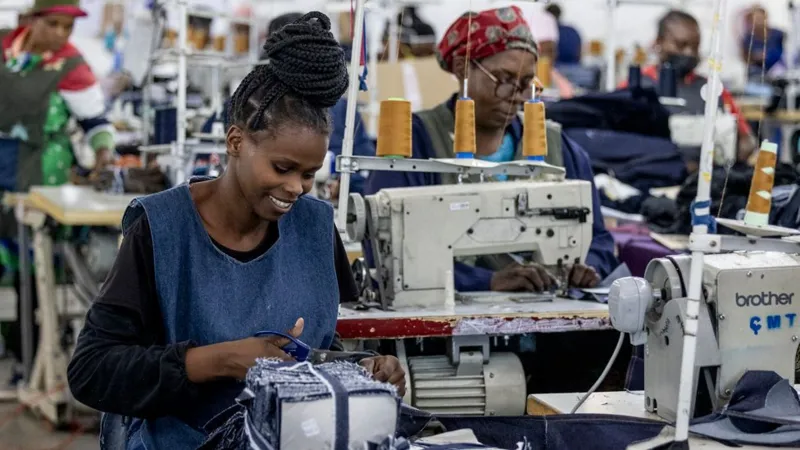In the complex world of international trade, sometimes the most unexpected players rise to prominence due to unique combinations of natural resources and manufacturing prowess. Lesotho, a small landlocked nation nestled in the mountains of Southern Africa, is one such case. Notably, it boasts rich diamond reserves and a burgeoning textile industry, primarily specializing in denim. These two sectors have catapulted Lesotho to the forefront of the United States’ tariff agenda during the Trump administration, illustrating the intricate ties between local economies and global trade policies.
The Diamond Factor
Lesotho’s diamond industry is one of its most significant economic drivers. Home to the famed Letšeng diamond mine, where some of the world’s largest and highest-quality diamonds are extracted, Lesotho produces stones that fetch jaw-dropping prices on the global market. The Letšeng mine is known for its exceptional quality gems, including the 603-carat diamond discovered in 2006 and the 528-carat diamond found in 2015, both of which put Lesotho on the diamond map.
However, the challenge for Lesotho in the context of tariffs lies in its reliance on the U.S. as a key export market. With the Trump administration implementing tariffs targeting specific imports, the viability of Lesotho’s diamond exports became precarious. The uncertainty around U.S. tariffs on luxury goods, including diamonds, sent ripples through the economy, compelling Lesotho to rethink its strategies and fortify its trade relations to maintain its competitive edge.
The Denim Connection
While diamonds may capture the spotlight, Lesotho’s textile industry deserves equal attention. The country has positioned itself as an emerging hub for denim production largely due to its eligibility under the African Growth and Opportunity Act (AGOA), which provides duty-free access to U.S. markets for certain apparel and textiles. This status allowed Lesotho to attract significant foreign investment and create thousands of jobs, making denim a cornerstone of its economy.
With a favorable tariff classification, Lesotho’s denim exports flourished in the late 2010s, accounting for a significant chunk of its GDP. However, a sudden shift in U.S. trade policy, particularly during the Trump administration, put these exports at risk. Tariffs on Chinese textiles and garments also led to increased scrutiny of other countries, including Lesotho, making the latter a target for tariff discussions in an overly protective trade environment.
The Tariff Tidal Wave
Trump’s trade agenda was marked by a pursuit of “America First,” leading to a comprehensive review of trade relations with various nations. Lesotho, with its unique export profile of diamonds and denim, became an intriguing case. Despite being a small player in the global market, the intertwined narratives of its natural resources and manufacturing capabilities made it a focus for tariff considerations.
In a surprising twist, Lesotho’s economy, largely reliant on these two sectors, faced unprecedented challenges. The U.S. tariffs threatened to undermine the profitability of its diamond and denim exports, leading to calls for reevaluation of its trade status and increased diplomatic efforts to secure more favorable terms.
Looking Forward
The interplay between Lesotho’s diamond and denim industries and U.S. tariffs underscores the delicate balance of global trade. As Lesotho strives to navigate these turbulent waters, its future will rely on innovative strategies to protect its key exports while reinforcing its role in the international market.
In conclusion, diamonds and jeans elevated Lesotho to a significant position in the U.S. tariff debate under the Trump administration. The story of this small nation serves as a reminder of how local industries can have a large impact on global trade dynamics. As Lesotho seeks to shine amidst adversity, the world will be watching to see how its resource wealth and manufacturing capabilities continue to shape its future.
Email Us on editorial@nnafrica.com













